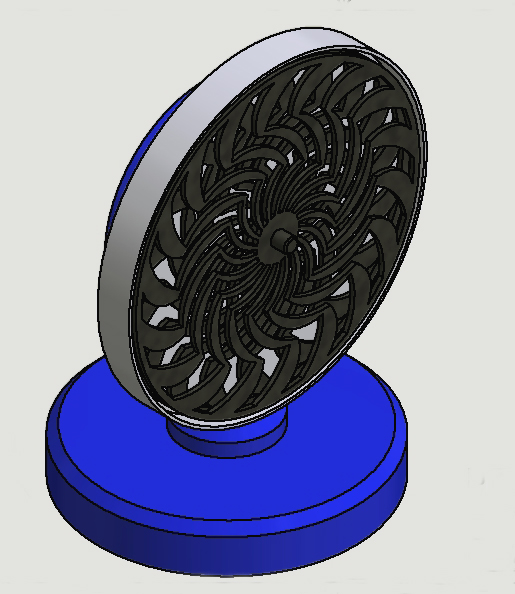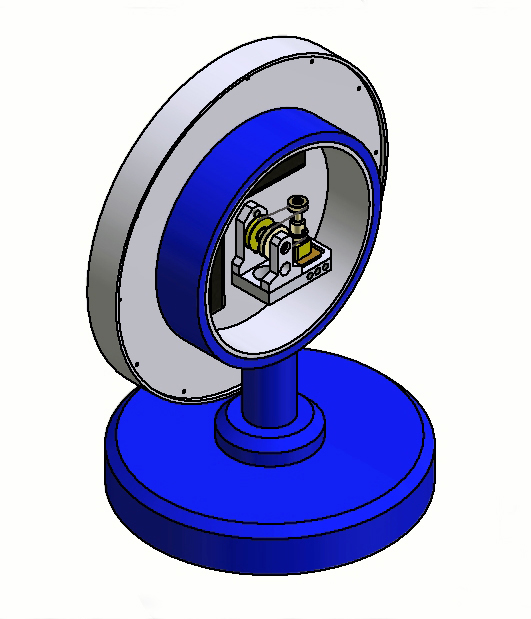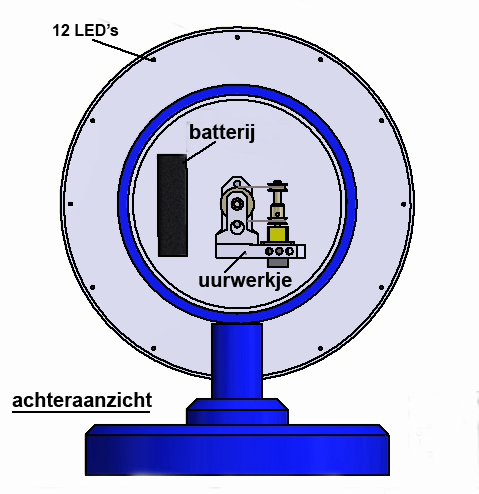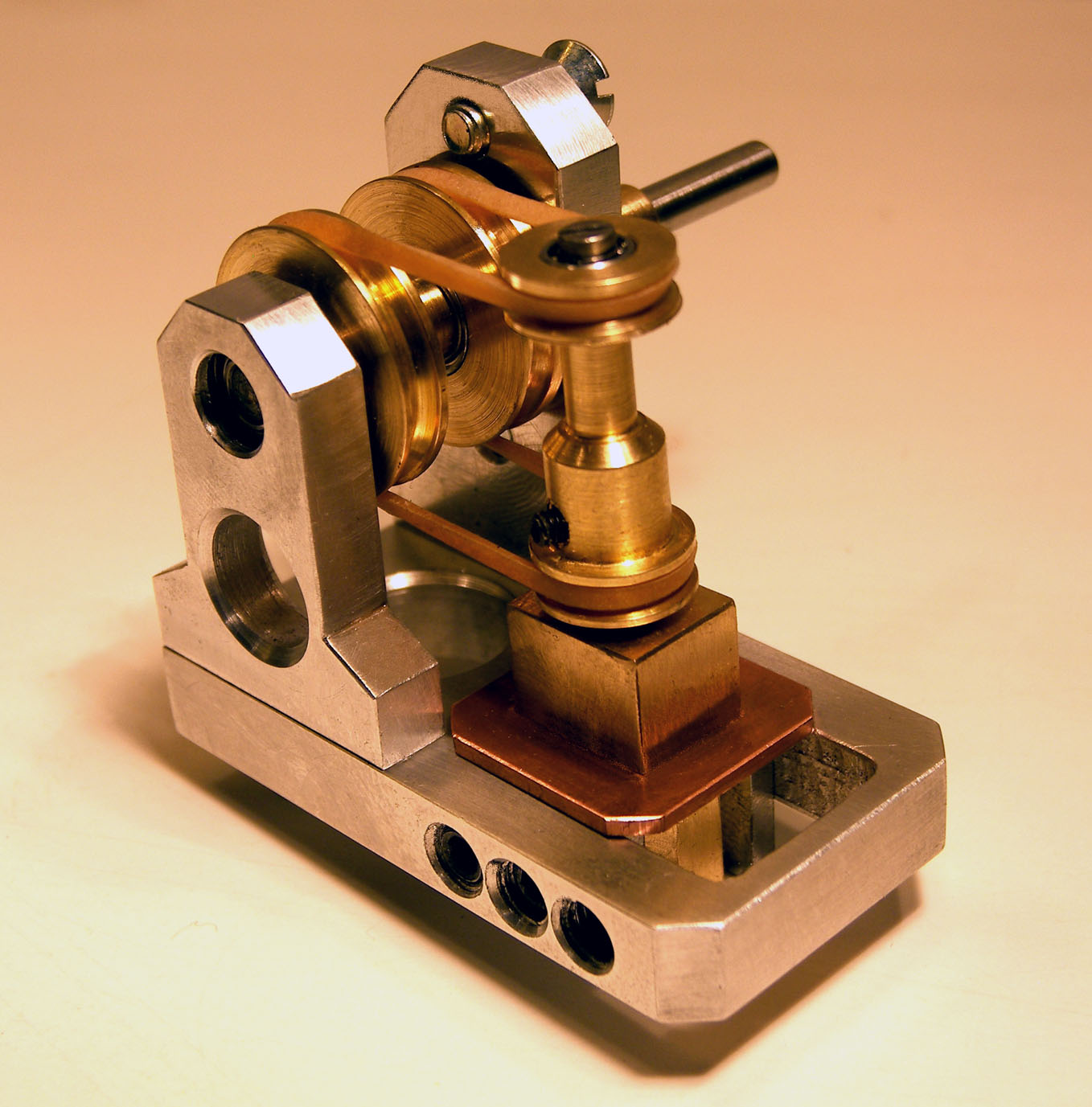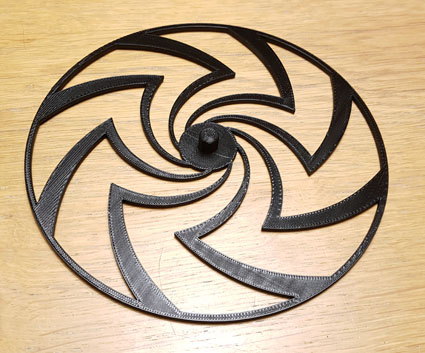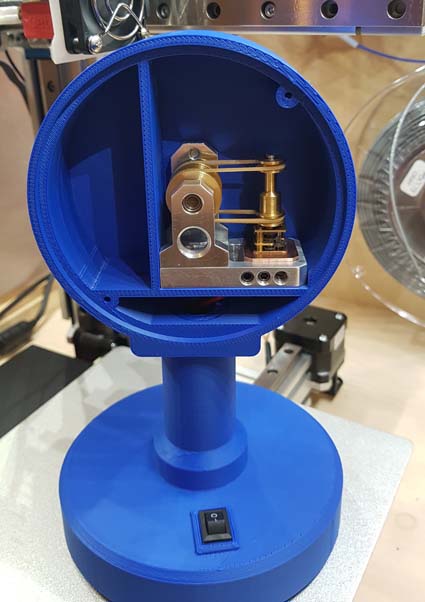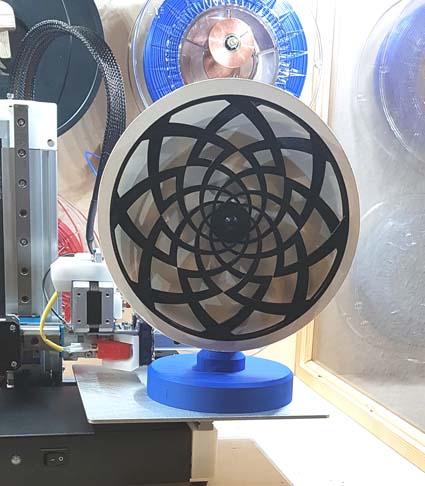The Moire effect
The term moiré may not be so familiar, but you will probably have consciously or unconsciously seen a moiré effect, for example if someone with a fine striped shirt comes on TV. If that person moves a little then annoying movement of those lines can occur in the shirt as a result of interference with the image lines with which the TV image is built up. The modern TV's have less of a problem because they have many more lines per area unit. The effect also occurs when you put two fine gauze pads on top of each other and then move them back and forth in a bit over each other. This effect is probably more well known and can be seen nicely on this YouTube video.
In ordinary life, this effect is usually perceived as bothersome, but the moiré effect can also be used in a positive way to make more or less artistic objects as already intrigued by Op-Art artists, especially in the 1950s and 1960s of the previous century. Click here to get an idea what these artists were working on at the time.
The "Moiré-Art Maarten" project
It was my son-in-law Maarten who came up with the idea to make a physical arrangement that could conjure up beautiful moiré effects for example on his desk, other than picking moire pictures from the internet. The idea was to have two discs with slot patterns in it, turning against each other in front of a white background. Maarten made a small program with which a ten examples of such discs can be turned around and my son Marc also added a penny in the bag for that. With this program one can get an idea how moiré effects can look, although there are actually infinite variants possible, click here to open this program.
The project had to have something like a clock where the hands have been replaced by such moiré discs and which, unlike a clock, rotate against each other instead of in the same direction.Maarten has a 3D printer with which he has already gained some experiences and with which he made a plastic carburetor for my model construction engines (see all under this page) and also a plastic Stirling engine. For making these types of discs with the fairly complex slot patterns in them, 3D printing is an extremely suitable technique, unlike that of making from metal, which would be a hard job that requires at least a lot of time and patience.
For making of the drive mechanism, or the "clockwork" as Maarten calls it, he asked for my help as a maker of model engines, which I gladly accepted. It is not obvious to make this "clockwork" also from plastic, among other things because of the necessary dimensional accuracies and the condition that it must move very lightly due to the rather low power of the small 3 volt motor that Maarten has purchased for this purpose.During the design phase Maarten and I have been in continuous consultation. I will explain the progress of this project periodically on the basis of the logbook below.
Logboek
January-18-2019nuary-18-2019
The CAD drawing package is ready. The table-top version will look as on the below pictures:
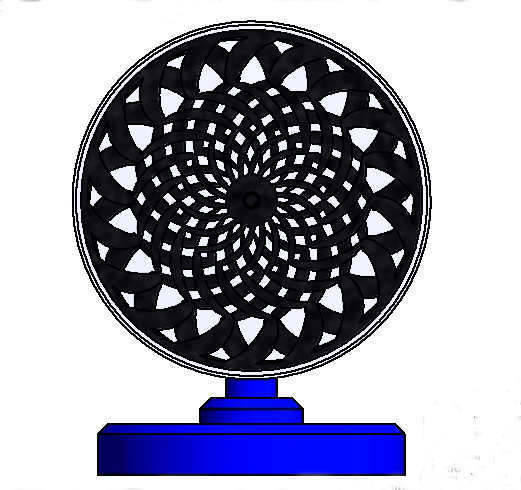
January-22-2019
The little "clockwork" is also ready now, see the picture below:
In fact it is the second version where I have built-in a delay of 1 in 2, because the moiré discs should preferably rotate slower than with the intrinsic speed of the 3V motor which is 15 rpm. Practice will show what the optimal rpm will be. With the choice of the supply voltage for the motor this speed can be adjusted somewhat.
We aim for a rotational speed of the discs in the vicinity of 5 rpm and that is probably possible if the power supply of the motor is reduced somewhat.
The lower pulley on the vertical shaft is screwed onto the shaft of the motor, the pulley above it drifts freely on two small ball bearings. The two pulleys on the horizontal axle that drive the two discs also run on ball bearings. An elastic band with light tension is wrapped around these four pulleys. The whole is moving very lightly so I expect the motor can handle this easily.
The clockwork weighs about 100 grams and is attached to the (white) "dial" with two M4 screws.
From January 27, this clockwork is also at home with Maarten so he can start with 3D printing of all the other parts and assemble the whole.
I wonder how it will ends.
January-26-2019
Maarten has printed his first two discs:
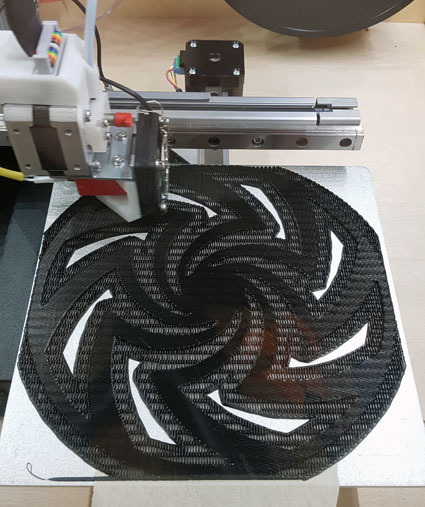
February-11-2019
Maarten has now printed everything. As can be seen in the pictures below, he has changed the support even more with among others a nice compartment for the clockwork that can be closed with a lid.

The picture below shows the result when leaving the 3D printer.
Soon Maarten will make a video with this "Moire-Art Maarten" in operation that I also will show here.
February-16-2019
Maarten made the two video's below:
In fact, the project has now been successfully completed.
